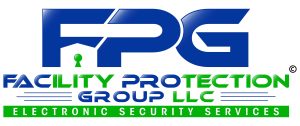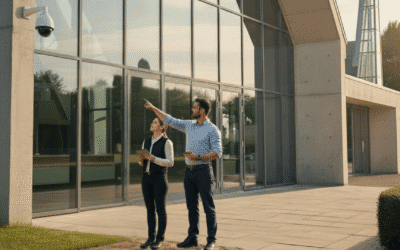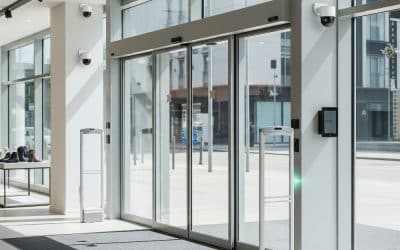 In today’s rapidly evolving security landscape, ensuring the safety of government and municipal facilities is of paramount importance. With the rise of diverse threats, comprehensive security measures must be implemented to protect not only the infrastructure but also the personnel and the public. This article delves into effective strategies, best practices, and innovative technologies that can significantly enhance physical security in government buildings.
In today’s rapidly evolving security landscape, ensuring the safety of government and municipal facilities is of paramount importance. With the rise of diverse threats, comprehensive security measures must be implemented to protect not only the infrastructure but also the personnel and the public. This article delves into effective strategies, best practices, and innovative technologies that can significantly enhance physical security in government buildings.
Understanding the Importance of Physical Security
Physical security encompasses a range of measures designed to protect buildings, assets, and personnel from unauthorized access and harm. For government facilities, the stakes are particularly high, as these entities often house sensitive information and critical operations.
The Evolving Threat Landscape
The nature of threats has transformed over the years. Traditional risks such as theft and vandalism have been joined by more sophisticated dangers, including terrorism and cyber threats that can have physical implications. This evolution necessitates an adaptable security framework that can respond to a variety of challenges.
The Role of Comprehensive Security Plans
A robust security plan is not merely a collection of random measures; it is a carefully crafted strategy that integrates various components to create a cohesive defense mechanism. From access control to surveillance systems, every element must work in harmony to ensure maximum protection.
Psychological Safety for Employees and Visitors
Beyond physical barriers, creating a sense of security for employees and visitors is crucial. When individuals feel safe, they can perform their duties effectively, which in turn enhances overall productivity and morale within the facility.
Key Components of a Security Plan
An effective security plan consists of several interrelated components that together form a comprehensive defense strategy. Each element plays a vital role in safeguarding the facility.
Access Control Systems
Access control is the backbone of physical security. It determines who can enter specific areas within a facility and under what conditions.
-
- Types of Access Control: This can range from traditional locks and keys to advanced biometric systems that use fingerprints or facial recognition.
- Zoning: Implementing a zoning strategy allows for different levels of access based on the sensitivity of the area. For instance, high-security zones may require multiple authentication methods.
Surveillance Systems
High-quality surveillance systems are essential for monitoring activities within and around government buildings.
-
- Digital Cameras: Investing in high-resolution cameras ensures that clear images are captured, which can be crucial for investigations.
- Integration with AI: Advanced surveillance systems can incorporate artificial intelligence to analyze footage in real time, identifying unusual behaviors or potential threats.
Physical Barriers
Physical barriers serve as the first line of defense against unauthorized access and attacks.
-
- Bollards and Barriers: Strategically placed bollards can prevent vehicle ramming attacks, while reinforced walls and blast-resistant windows provide protection against explosives.
- Design Considerations: Modern barriers can be designed to blend aesthetically with the building’s architecture, ensuring that security does not detract from the facility’s appearance.
Training and Awareness Programs
Human factors play a significant role in the effectiveness of any security system. Therefore, training and awareness programs are essential.
Employee Training
Regular training sessions equip employees with the knowledge and skills necessary to respond effectively to security threats.
-
- Simulation Drills: Conducting drills for various scenarios, such as active shooter incidents or natural disasters, helps staff understand their roles and responsibilities.
- Continuous Education: Keeping employees informed about the latest security protocols and technologies ensures that they are prepared to handle emerging threats.
Building a Security Culture
Fostering a culture of security within the organization encourages vigilance and proactive behavior among employees.
-
- Open Communication: Encouraging staff to report suspicious activities or concerns can lead to early detection of potential threats.
- Incentives for Participation: Recognizing and rewarding employees who actively contribute to security efforts can enhance engagement and commitment.
Collaboration with Local Law Enforcement
Establishing strong relationships with local law enforcement agencies can significantly bolster security efforts.
Information Sharing
Collaboration allows for the exchange of valuable intelligence regarding potential threats.
-
- Joint Training Exercises: Conducting joint drills with law enforcement helps both parties understand each other’s capabilities and limitations.
- Regular Meetings: Keeping lines of communication open ensures that both government facilities and law enforcement are aware of the latest security trends and threats.
Emergency Response Planning
Coordinating emergency response plans with local law enforcement can streamline actions during a crisis.
-
- Cooperative Strategies: Developing a unified approach to emergency situations ensures that all parties are on the same page, reducing confusion and improving response times.
- Resource Allocation: Collaborating with law enforcement can also lead to better resource allocation during emergencies, ensuring that the necessary personnel and equipment are available.
Technological Innovations in Security
The integration of advanced technologies has revolutionized physical security measures in government facilities.
Smart Surveillance Systems
Modern surveillance systems leverage technology to enhance monitoring capabilities.
-
- AI and Machine Learning: These technologies can analyze vast amounts of data to detect anomalies and alert security personnel in real time.
- Remote Monitoring: Cloud-based systems allow for remote access to surveillance feeds, enabling security teams to monitor activities from anywhere.
Cybersecurity Measures
In an increasingly digital world, the intersection of physical and cybersecurity cannot be overlooked.
-
- Protecting Security Systems: Ensuring that surveillance and access control systems are secure from cyber threats is critical.
- Employee Training on Cyber Hygiene: Regular training on cybersecurity best practices helps prevent breaches that could compromise physical security.
Regular Security Assessments
Conducting regular assessments of security measures is essential for identifying vulnerabilities and areas for improvement.
Comprehensive Security Audits
Periodic audits help evaluate the effectiveness of existing security protocols.
-
- Identifying Weaknesses: Audits can reveal gaps in security that need to be addressed, ensuring that the facility remains secure against evolving threats.
- Updating Protocols: Based on audit findings, security protocols can be updated to reflect the current threat landscape.
Physical Security Assessments
Engaging professionals to conduct physical security assessments can provide valuable insights.
-
- Tailored Recommendations: Experts can offer customized solutions that address the specific needs of the facility.
- Implementation Guidance: Professional assessments often include guidance on implementing recommended changes effectively.
Emergency Preparedness and Response
Being prepared for emergencies is a critical aspect of physical security.
Developing Emergency Plans
Comprehensive emergency plans should outline procedures for various scenarios.
-
- Clear Protocols: Establishing clear protocols for different emergencies ensures that all personnel know their roles and responsibilities.
- Communication Strategies: Effective communication during emergencies is vital for coordinating responses and keeping everyone informed.
Regular Drills and Training
Conducting regular drills helps reinforce emergency protocols and build confidence among staff.
-
- Variety of Scenarios: Drills should cover a range of potential emergencies, from fires to security breaches, to ensure comprehensive preparedness.
- Feedback and Improvement: After each drill, gathering feedback allows for continuous improvement of emergency plans.
The Role of Physical Barriers in Security
Physical barriers are essential components of a comprehensive security strategy.
Types of Barriers
Different types of barriers serve various purposes in enhancing security.
-
- Bollards: These are effective in preventing vehicle access to sensitive areas.
- Reinforced Walls: Strong walls can deter forced entry and protect against ballistic threats.
- Blast-Resistant Windows: These windows provide protection against explosions and reduce the risk of injury to occupants.
Aesthetic Considerations
While security is paramount, it is possible to design barriers that are both functional and visually appealing.
-
- Architectural Integration: Barriers can be designed to complement the building’s architecture, maintaining an inviting appearance while ensuring safety.
- Custom Solutions: Tailoring barrier designs to fit specific environments can enhance both security and aesthetics.
Creating a Secure Environment
A secure environment goes beyond physical measures; it involves creating a culture of safety.
Engaging the Community
Involving the community in security efforts fosters a sense of collective responsibility.
-
- Public Awareness Campaigns: Educating the public about security measures and encouraging vigilance can enhance overall safety.
- Collaboration with Local Organizations: Partnering with community organizations can lead to more effective security initiatives.
Continuous Improvement
Security is an ongoing process that requires regular evaluation and adaptation.
-
- Feedback Mechanisms: Establishing feedback channels allows for continuous improvement based on real-world experiences.
- Staying Informed: Keeping abreast of the latest security trends and technologies ensures that measures remain effective and relevant.
We Provide Security Solutions for Government Facilities
Financial firms and companies require robust security solutions to protect sensitive financial data, safeguard against cyber threats, and ensure compliance with stringent regulatory requirements.
> Learn More
As government and municipal facilities face an increasingly complex security landscape, implementing a comprehensive physical security strategy is essential. By integrating advanced technologies, fostering collaboration with law enforcement, and promoting a culture of preparedness, these entities can enhance their resilience against a variety of threats. Continuous evaluation and adaptation of security measures will ensure that facilities remain safe and secure for employees and the public alike.
Contact Us (877-762-6460) for a free consultation!
View Past Projects
—
 About Facility Protection Group
About Facility Protection Group
Facility Protection Group is a Certified Systems Integrator based in the Southeastern United States, specializing in electronic security services supporting both traditional and cloud based Access Control (Card Access), Video Surveillance / CCTV, Audio / Video Intercoms, and Intrusion Alarm Systems. Founded in 2018 and located in Tampa, Florida; Facility Protection Group has assembled a team that has a tremendous wealth of industry knowledge and experience.

 About Facility Protection Group
About Facility Protection Group

